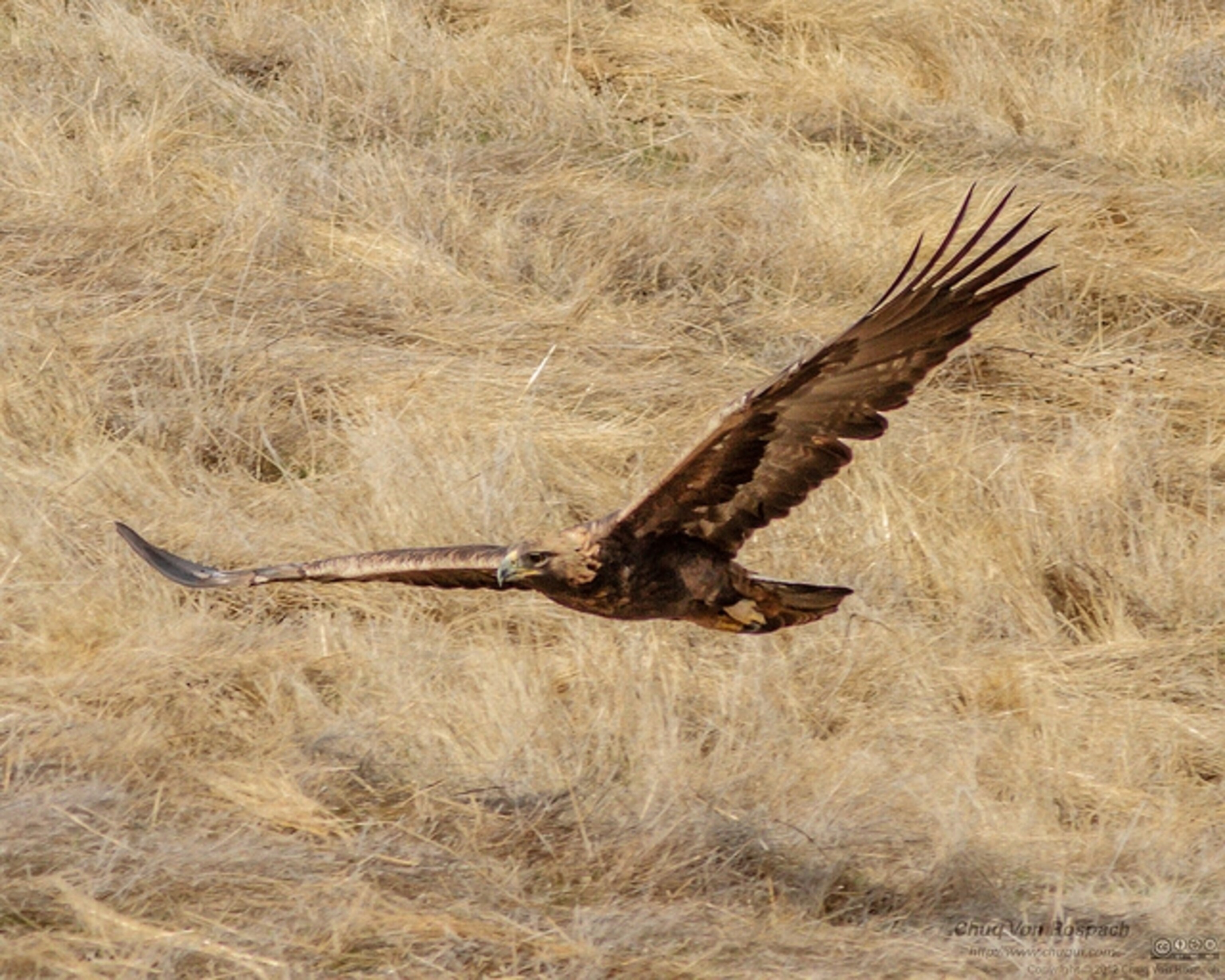
Federal Study Highlights Spike in Eagle Deaths at Wind Farms
A newly published study by U.S. Fish and Wildlife Service researchers says that wind energy facilities have killed at least 85 golden and bald eagles between 1997 and 2012—and that eagle fatalities possibly may be much higher.
The study also indicates that eagle deaths have increased dramatically in recent years as the nation has turned increasingly to wind farms as a source of renewable, low-pollution energy, with nearly 80 percent of the fatalities occurring between 2008 and 2012 alone. (See related post: “Wind Farm Faces Fine Over Golden Eagle’s Death.”)
The study, published in the September issue of Journal of Raptor Research, is one of the first efforts to calculate the injuries and deaths suffered by eagles that fly into the blades of horizontal wind turbines. Many of the areas that are promising sources of wind energy unfortunately also overlap with eagle habitats, and eagles are at risk because their senses tend to be focused upon the ground as they look for prey, rather than staring ahead to see spinning blades. Dismemberment or blunt-force trauma from colliding with the turbines seems to be the most common fate for the eagles that fly into the facilities, though at least one eagle was electrocuted.
“This adds to the concerns that we have about protecting the eagle population,” said Alicia King, a spokesperson for the U.S. Fish and Wildlife Service’s migratory bird program.
However, the significance of the findings is not completely clear.
John Anderson, an official with the American Wind Energy Association, said that the eagle deaths cited in the study only represent an “extremely small portion” of human-caused mortality for both golden and bald eagle species. A statement on the industry association’s website also noted that most eagle fatalities are concentrated at a small number of older wind facilities built in the 1980s, before the interaction of eagles with turbines was well understood.
The study found that the majority of the eagle deaths between 1997 and 2012 occurred in Wyoming, which had 29 deaths, and California, which had 27. Oregon came in a distant third with six deaths, and three states—Washington, Colorado and New Mexico—each had five eagles killed during that period. (See related post: “Montana Wind Turbines Give Way to Raptors.”)
The researchers warned that the survey most likely understates the number of eagle deaths, because of a lack of rigorous monitoring and reporting. The study also excluded the Altamont Pass Wind Resource Area in California, where various studies suggest that between 40 and 116 golden eagles are killed annually, according to a 2006 California Energy Commission report, though recently the farm has shown progress in reducing overall bird deaths. (See related post: “Notorious Altamont Wind Area Becomes Safer for Birds.”)
